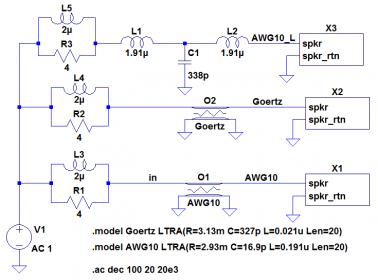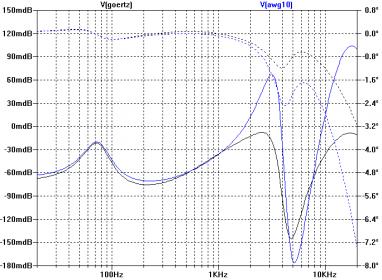Nice job, Amir!
FWIWFM, last time I fooled with cable simulations I used a distributed model (RLCG) with anywhere from 10 to 100 taps. It was easy to set up in the simulator as iterated instances, or in my Mathcad model as a transmission line model.
A lumped cable model typically puts the R first, then the L (though order doesn't matter), then the C at the load end where it has the most impact when driven by a low-impedance source (which describes most audio preamps/amps). It is thus a standard L model representation. I prefer a pi model myself, but with a low-Z source it doesn't make much difference. And, as I said above, I would (and do) use a much more distributed model for more realistic modeling, but in this case the simple model is easy for folk to understand and provides a gross (easy to see) means of visualizing the impact of various parameters.
The long way of saying I agree with gary and Amir re. the models in this instance. - Don
FWIWFM, last time I fooled with cable simulations I used a distributed model (RLCG) with anywhere from 10 to 100 taps. It was easy to set up in the simulator as iterated instances, or in my Mathcad model as a transmission line model.
A lumped cable model typically puts the R first, then the L (though order doesn't matter), then the C at the load end where it has the most impact when driven by a low-impedance source (which describes most audio preamps/amps). It is thus a standard L model representation. I prefer a pi model myself, but with a low-Z source it doesn't make much difference. And, as I said above, I would (and do) use a much more distributed model for more realistic modeling, but in this case the simple model is easy for folk to understand and provides a gross (easy to see) means of visualizing the impact of various parameters.
The long way of saying I agree with gary and Amir re. the models in this instance. - Don


















